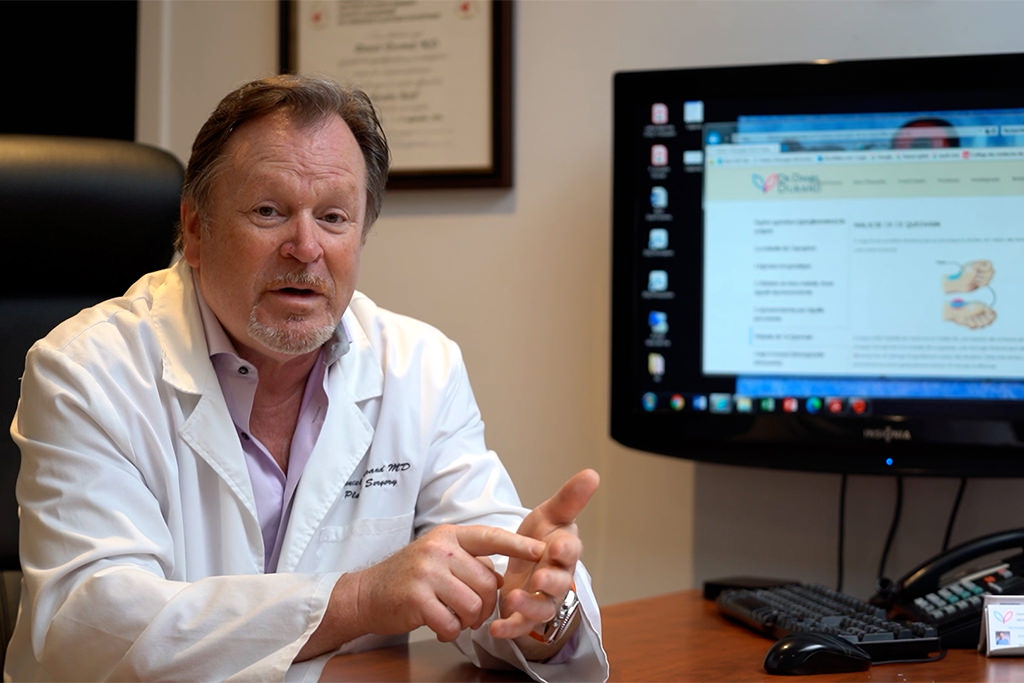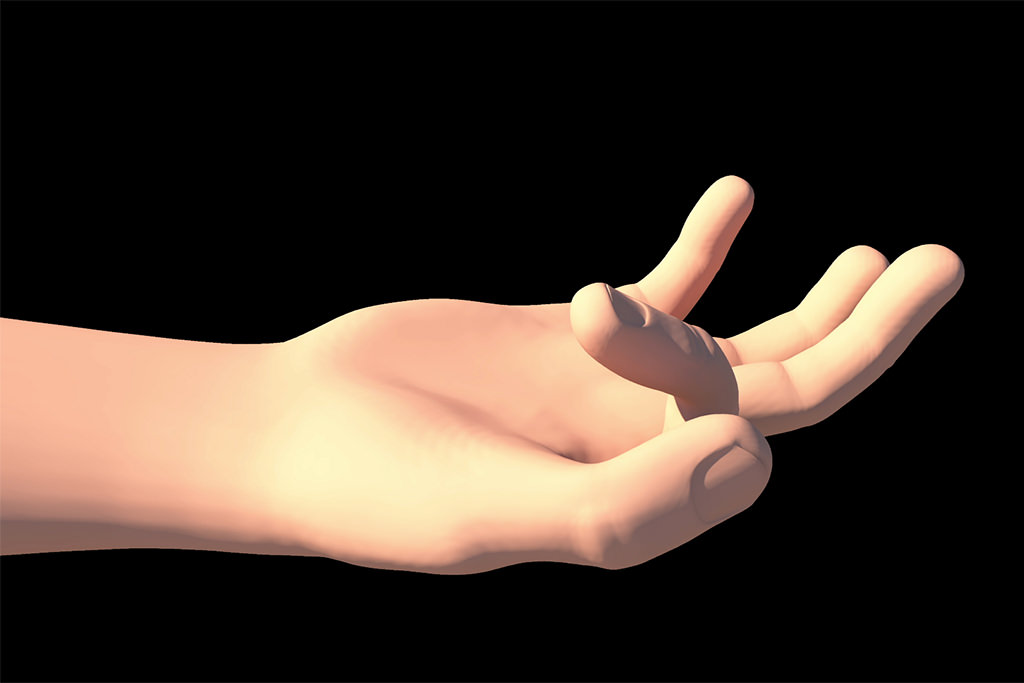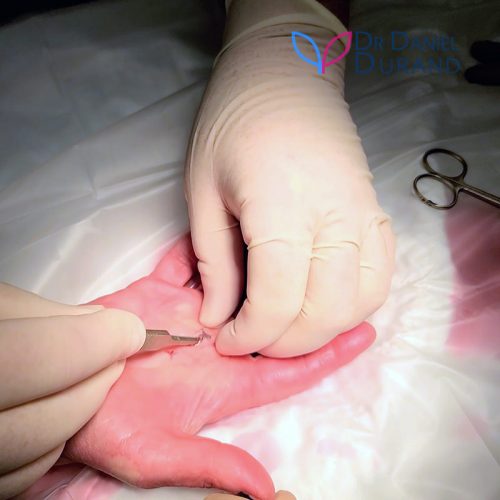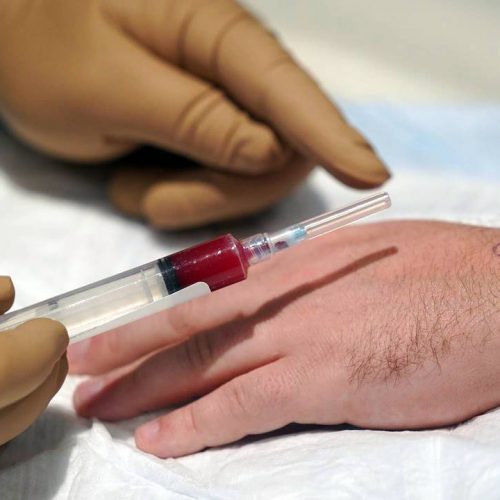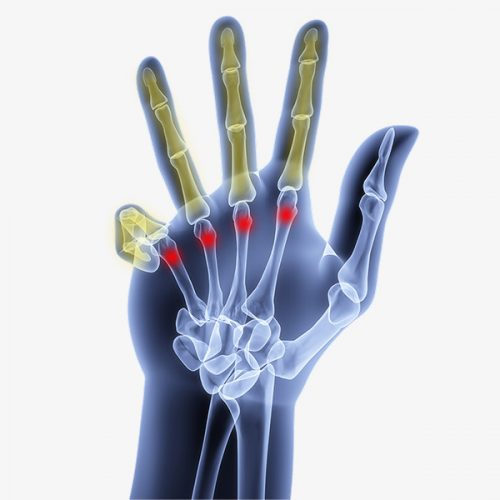

Trigger Finger



WHAT IS TRIGGER FINGER?
Trigger finger is a condition that causes pain, stiffness, and a sensation of locking or catching when you bend and straighten your finger. The condition is also known as “stenosing tenosynovitis.” The ring finger and thumb are most often affected by trigger finger, but it can occur in the other fingers, as well. When the thumb is involved, the condition is called “trigger thumb.”
SYMPTOMS OF TRIGGER FINGER
Symptoms of trigger finger usually start without injury, although they may follow a period of heavy hand use. One or more fingers may be affected. Symptoms may include:
- A tender lump in your palm
- Swelling
- Catching or popping sensation in your finger or thumb joints
- Pain when bending or straightening your finger
Stiffness or catching tends to be worse after inactivity, such as when you wake up in the morning. Your fingers will often loosen up as you move them.
Sometimes, when the tendon breaks free, it may feel like your finger joint is dislocating. In severe cases of trigger finger, the finger cannot be straightened, even with help.
IF YOU ARE SUFFERING FROM SYMPTOMS OF TRIGGER FINGER AND EVALUATING YOUR TREATMENT OPTIONS, SCHEDULE A CONSULTATION WITH DR. DANIEL DURAND TODAY.
WHAT CAUSES TRIGGER FINGER?
While the causes of trigger finger are not well known, several factors may increase your risk for developing the condition. These include:
- Trigger fingers are more common in women than men
- They occur most frequently in people who are between the ages of 40 and 60 years
- Trigger fingers are more common in people with certain medical problems, such as diabetes and rheumatoid
- Trigger fingers may occur after activities that strain the hand
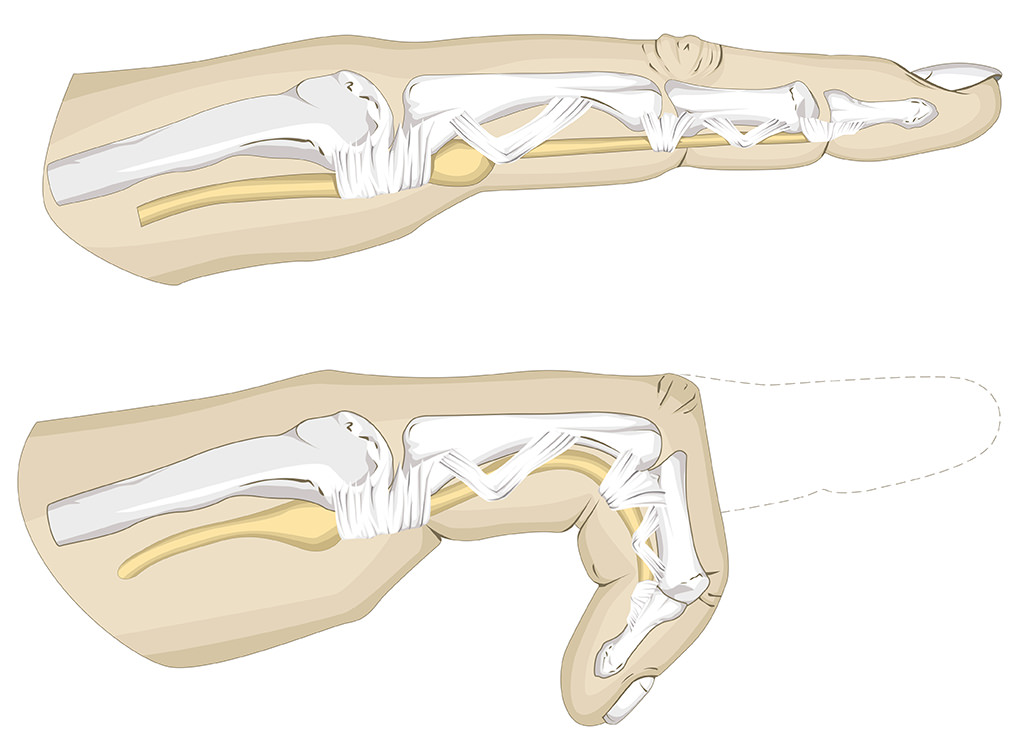
HOW IS TRIGGER FINGER DIAGNOSED?
Your doctor will be able to diagnose a trigger finger by talking with you about your symptoms and examining your hand. Typically, x-rays or other tests are not needed.
During the exam, your doctor will look for:
- Tenderness over the flexor tendon sheath in the palm of your hand
- Thickening or swelling of the tendon sheath
- Triggering when you bend and straighten your finger
WHEN SEEKING A DIAGNOSIS OR TREATMENT, IT’S BETTER TO SEE A DOCTOR SOONER RATHER THAN LATER. ONCE A CONDITION IS SEVERE, THE DISEASES ARE MORE DIFFICULT TO CORRECT.
EARLY INTERVENTION IS KEY TO AVOIDING PERMANENT DAMAGE. DEPENDING ON YOUR DIAGNOSIS, NONSURGICAL TREATMENT MAY BE AN OPTION.
HOW IS TRIGGER FINGER TREATED?
There are a few different procedures to help treat Trigger finger condition. Treatment varies depending on its severity and duration. Dr. Daniel Durand will take the time to carefully outline the various options available to you along with the benefits and risks associated with each procedure during your comprehensive one-on-one consultation.
CONSERVATIVE NON-INVASIVE TREATMENTS
- Rest. Avoid activities that require repetitive gripping, repeated grasping or the prolonged use of vibrating hand-held machinery until your symptoms improve. If you can’t avoid these activities altogether, padded gloves may offer some protection.
- A splint. Your doctor may have you wear a splint at night to keep the affected finger in an extended position for up to six weeks. The splint helps rest the tendon.
- Stretching exercises. Your doctor may also suggest gentle exercises to help maintain mobility in your finger.
- Injections therapy. Injections therapy is a biological treatment designed to improve the biologic environment of the tissue. This involves obtaining a small sample of blood from the arm and centrifuging it (spinning it) to obtain platelets from the solution. Platelets are known for their high concentration of growth factors, which can be injected into the affected area.
SURGICAL PROCEDURE
If your symptoms are severe or if conservative treatments haven’t helped, Dr. Durand might suggest surgical solution.
- Trigger finger decompression. Working through a small incision near the base of your affected finger, a surgeon can cut open the constricted section of tendon sheath. This procedure is usually done in an operating room.
HAND CARE WITH DR DANIEL DURAND
NOT ALL HAND AND WRIST CONDITIONS REQUIRE SURGICAL SOLUTIONS. OTHER TREATMENT OPTIONS ARE AVAILABLE FOR LESS SEVERE ISSUES. IF YOU’VE BEEN EXPERIENCING TRIGGER FINGER SYMPTOMS, SCHEDULE AN APPOINTMENT WITH DR. DANIEL DURAND TODAY!

